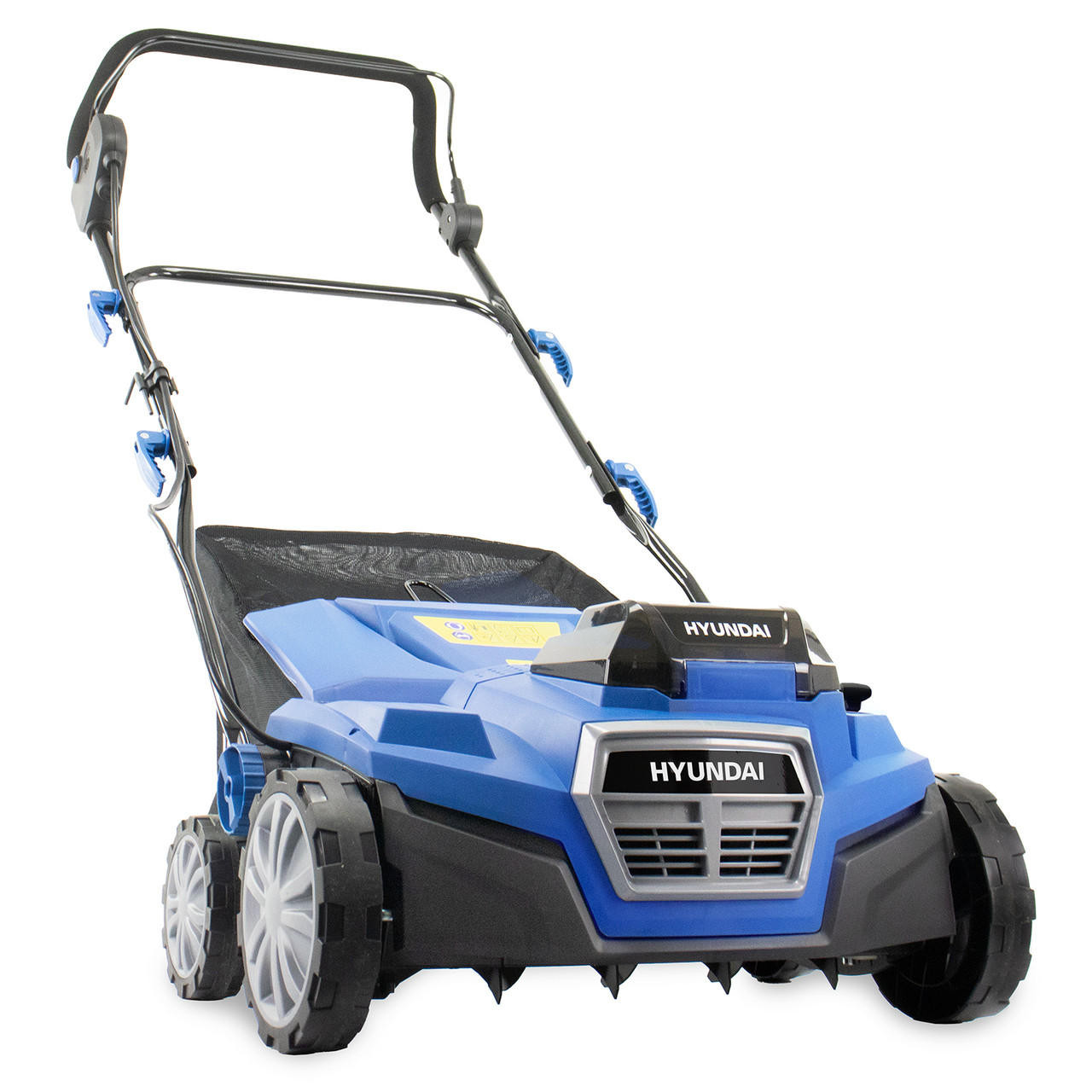Scarifying FAQ's - Common Questions Answered
Posted by Hyundai Power Products on 20th Feb 2025
Your Common Scarifying Questions Answered
By Hyundai Power Products
Our Hyundai Power Products experts are here to answer your most common questions about scarifying your lawn and using a scarifier effectively. Achieve stunning results this season with simple lawn care tips that will transform your garden.
Scarifying FAQ's
Scarifying is best done in spring (April–May) or early autumn (September), when the grass is actively growing and conditions support fast recovery. These periods provide the optimal conditions for grass recovery, as the weather is mild, and the soil is warm and moist, encouraging new growth.
Yes — mowing your lawn to around 2–3cm a few days before scarifying makes the process more effective and helps the scarifier reach deeper into the thatch.
The recovery time after scarifying can vary depending on the lawn’s condition and the time of year. Generally, it takes around 2-6 weeks for the lawn to recover. In spring, recovery is faster due to rapid growth, while autumn recovery might take a bit longer.
Yes, it's best to kill moss before scarifying. Apply a moss killer or lawn feed containing iron sulphate around 7–14 days before scarifying. This will turn the moss black and make it easier to remove during the scarification process.
Yes, scarifying a patchy lawn can help remove dead grass, moss, and thatch, which may be contributing to its patchiness. However, be gentle with a patchy lawn to avoid further damage. Follow up with overseeding and feeding to promote new growth and help fill in the patches.
Both aeration and scarification have their purposes. Aeration improves soil compaction and allows water, air, and nutrients to reach the grass roots, while scarification removes thatch and moss. If your lawn is compacted, aerate first, then scarify. If there is excess thatch or moss, focus on scarifying.
After scarifying, rake up any debris left on the surface, then overseed the lawn to promote new grass growth. Apply a top dressing of compost or sand to help protect the new seeds and encourage healthy growth. Finally, water the lawn well, especially during dry periods, to aid recovery.
Yes, over-scarifying can damage your lawn by removing too much grass and exposing soil, leading to weed invasion and reduced grass health. It's best to scarify once or twice a year, depending on your lawn's condition.
Generally, you should go over the lawn once in each direction, creating a crisscross pattern. This ensures thorough removal of moss and thatch without causing excessive damage.
You should overseed immediately after scarifying, ideally on the same day. The exposed soil and reduced thatch layer create ideal conditions for seed germination and new grass growth.
Avoid scarifying when the lawn is too wet — soggy soil can lead to damage, muddy patches, and poor results. Aim for a day when the soil is slightly moist, but not soggy or waterlogged.
Yes, scarifying effectively removes dead grass, moss, and other organic debris that builds up as thatch on your lawn. This process helps promote air and water flow to the soil and encourages healthier grass growth.
Iron sulphate can be useful for controlling moss, as it blackens and kills it. It's often used before scarifying to make moss removal easier. Additionally, iron sulphate can green up the lawn and strengthen grass, making it more resistant to disease
Typically, scarifying once a year is sufficient, usually in early autumn. For lawns with heavy thatch or moss, you might consider scarifying twice a year — once in spring and once in autumn.
These answers should help guide your customers on how to properly care for their lawns using scarifiers and ensure they achieve the best results!
If you need further advice about scarifying your lawn, you can read our Scarifying and Aerating Guide. For help choosing the right scarifier, check out our Scarifier Buying Guide. And for more tips, read our blog about when and how to scarify for the perfect lawn.
Related Article
We hope you’ve found these tips helpful and remember: if you need any further advice, our team of experts is on-hand to help you, so just get in touch! If you need expert advice or for any questions you may have, you can give us a call on 01646 687880, fill out the contact form here or drop us a message on any of our social media pages - Facebook, Instagram or Twitter.

 Expert Advice and Aftersales
Expert Advice and Aftersales Free UK Delivery*
Free UK Delivery*






